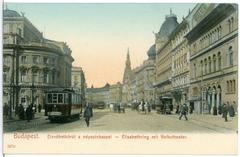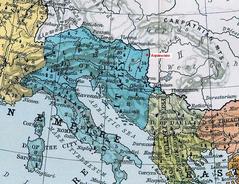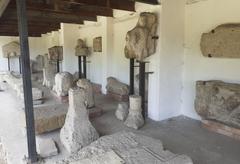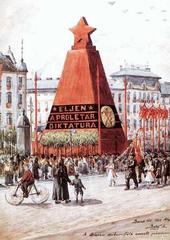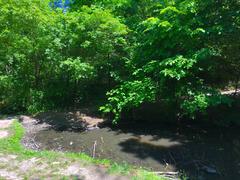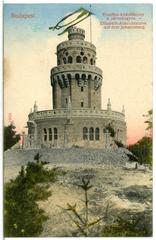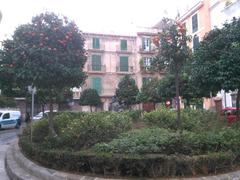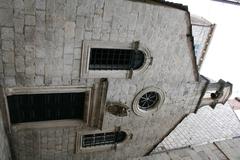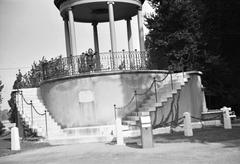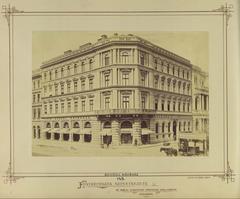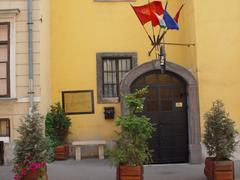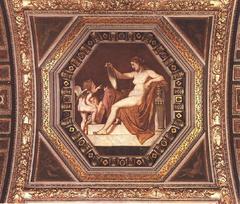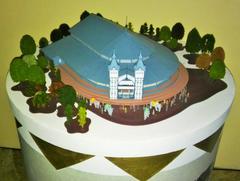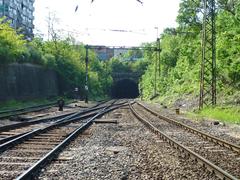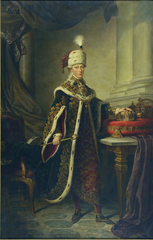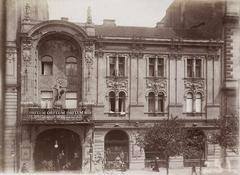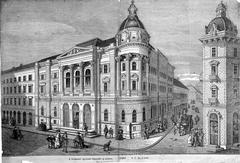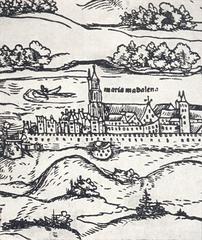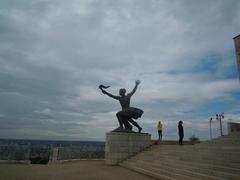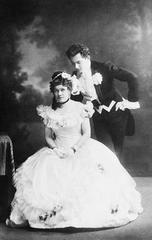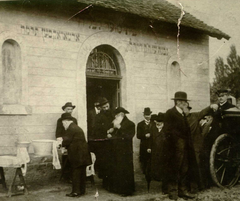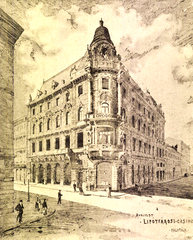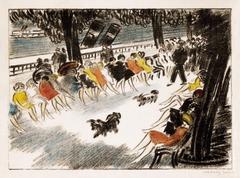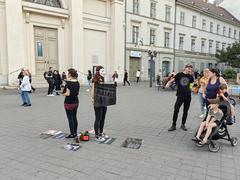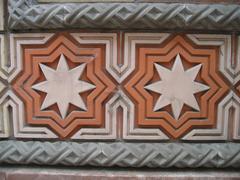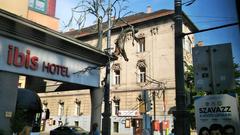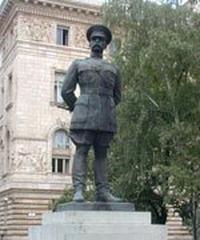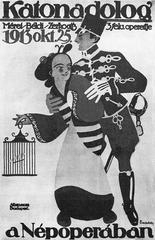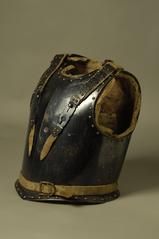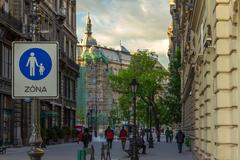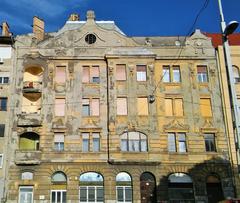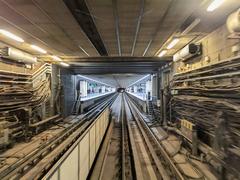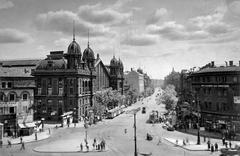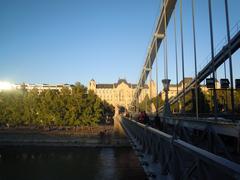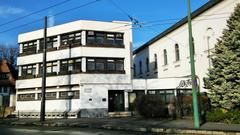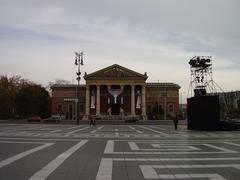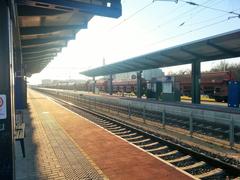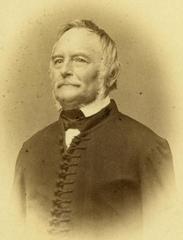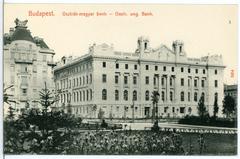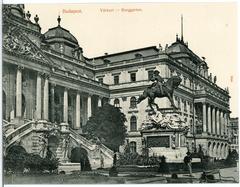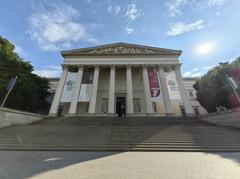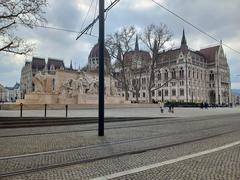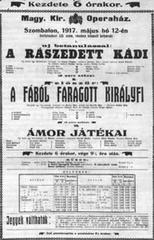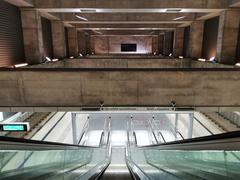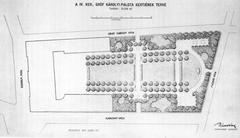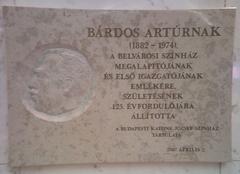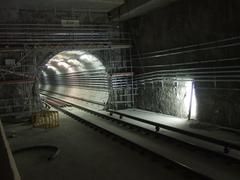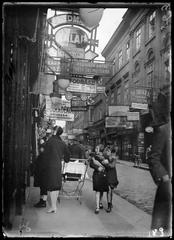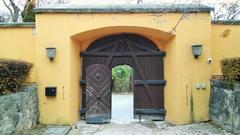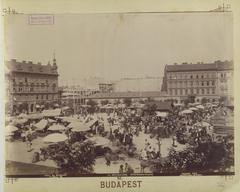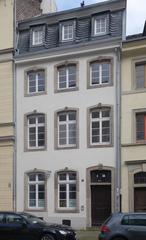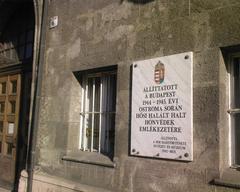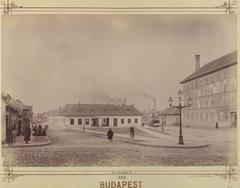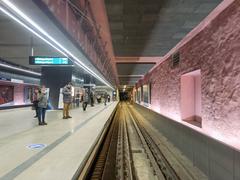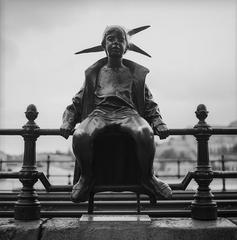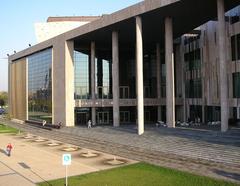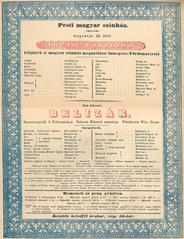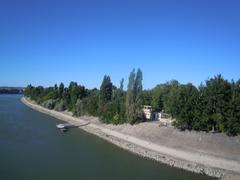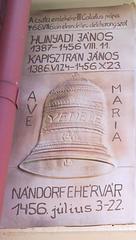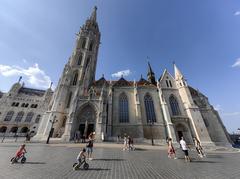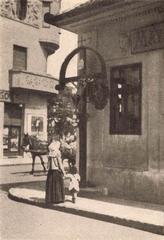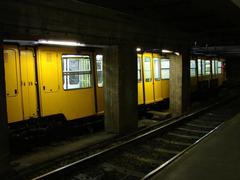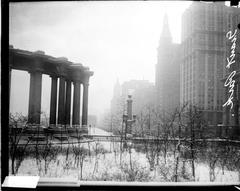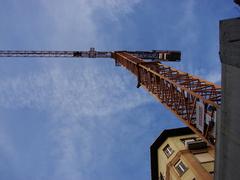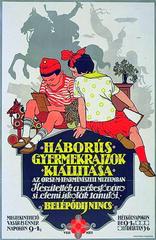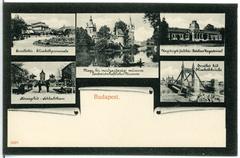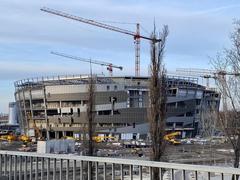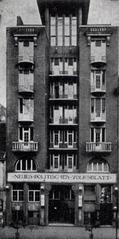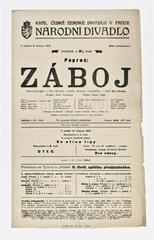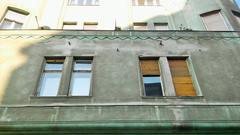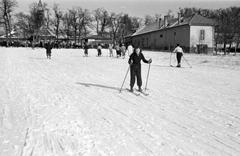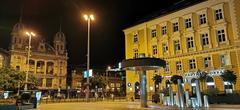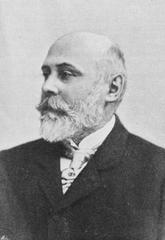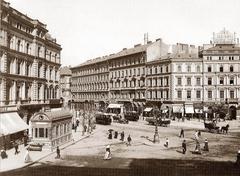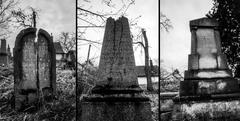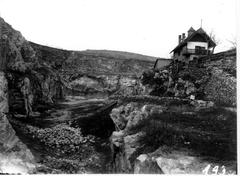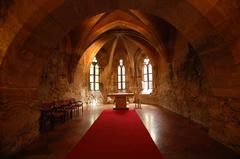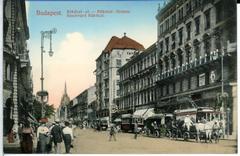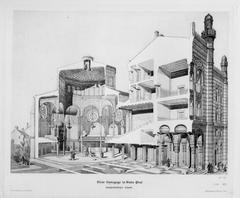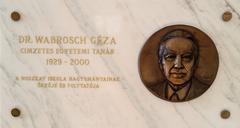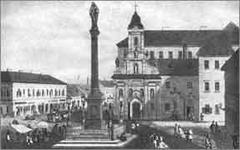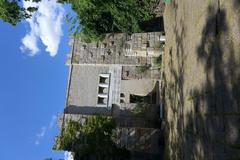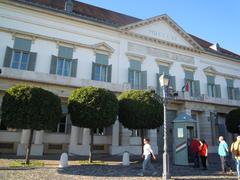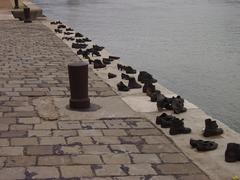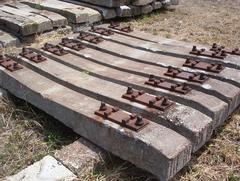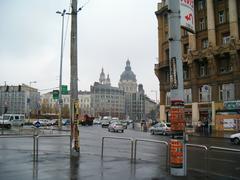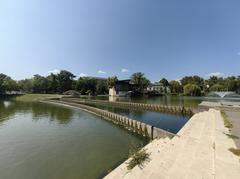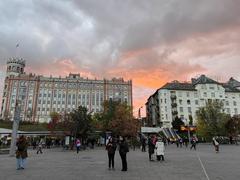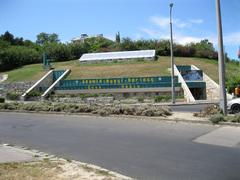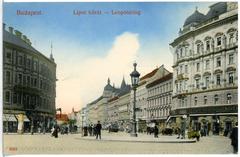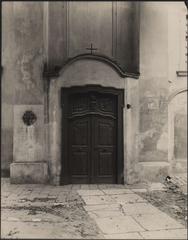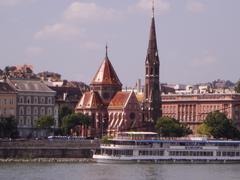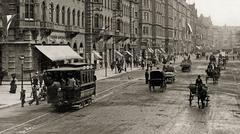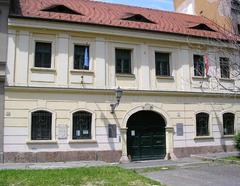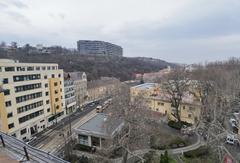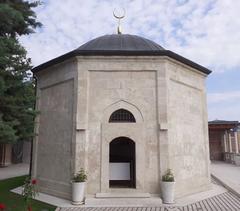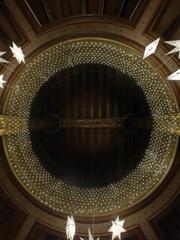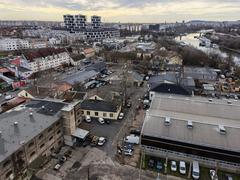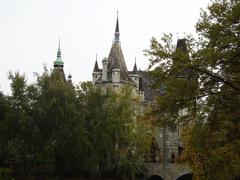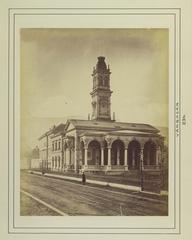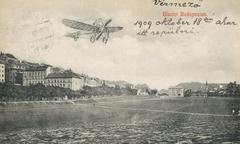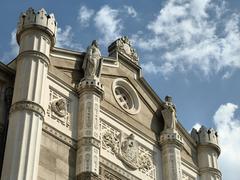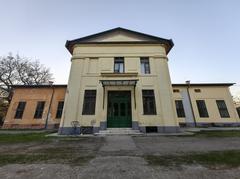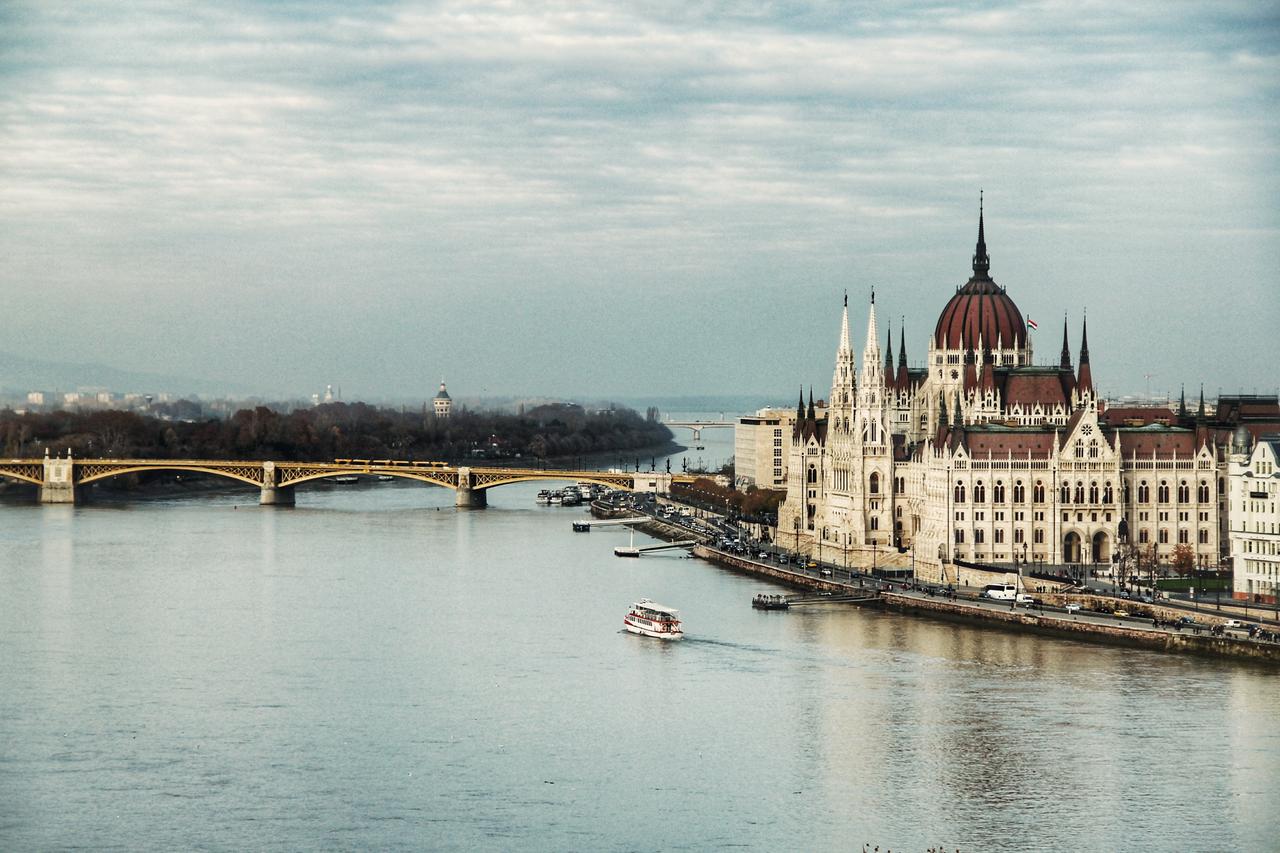
Comprehensive Guide to Visiting Budapest, Hungary
Date: 29/07/2024
Captivating Introduction: Start with an attention-grabbing statement or intriguing fact about Budapest. Use vivid language to immediately transport the reader.
Welcome to Budapest, where history whispers through cobblestone streets, and every corner has a tale to tell. Imagine a city where ancient Roman ruins sit alongside grand Habsburg palaces and Ottoman-era thermal baths. Budapest, often called the ‘Paris of the East,’ is a captivating blend of old-world charm and vibrant modernity. Here, you can stroll along the Danube River, soak in mineral-rich thermal baths, and enjoy a rich tapestry of Hungarian culture and cuisine. This guide will take you on a journey through time, revealing the hidden gems and must-visit attractions that make Budapest a truly unique destination. Get ready to explore the Hungarian capital like a savvy local, with insider tips and engaging stories that bring the city’s history and culture to life. Whether you’re a history buff, a foodie, or an adventurer, Budapest has something for everyone. Let’s dive in and discover the magic of this enchanting city! (Just Budapest, UNESCO, Travel Begins at 40)
Table of Contents
- Historical Overview
- A Stroll Through Time: Budapest’s Enigmatic Past
- Ancient Beginnings and Roman Influence
- Medieval Period and the Rise of Buda and Pest
- Ottoman Occupation
- Habsburg Rule and the Austro-Hungarian Empire
- 20th Century Turmoil: World Wars and Revolution
- Post-Soviet Era and Modern Budapest
- Hidden Gems and Quirky Local Customs
- Engaging All Five Senses
- Mini-Quests for the Adventurous
- Cultural Context and Etiquette
- Sample Itinerary: Choose Your Own Adventure
- Local Phrases and Slang
- Seasonal Highlights
- Myth Busting and Surprising Facts
- Short Stories and Legends
- FAQ
- Must-Visit Attractions
- Hungarian Parliament Building
- Buda Castle
- Fisherman’s Bastion
- Széchenyi Thermal Bath
- St. Stephen’s Basilica
- Chain Bridge
- Heroes’ Square
- Andrássy Avenue
- Margaret Island
- Great Market Hall
- Gellért Hill and Liberty Statue
- Dohány Street Synagogue
- House of Terror Museum
- Budapest Zoo and Botanical Garden
- Rudas Baths
- Váci Street
- Memento Park
- Budapest Eye
- Hungarian State Opera House
- Shoes on the Danube Bank
- Cultural Insights
Historical Overview
A Stroll Through Time: Budapest’s Enigmatic Past
Ancient Beginnings and Roman Influence
Imagine a time when woolly mammoths roamed Europe and ancient tribes settled along the majestic Danube River. Fast forward to around AD 89, when the Romans established Aquincum, a bustling city where gladiators fought and citizens soaked in thermal baths. Today, visitors can explore these ancient ruins, including an amphitheater and a captivating museum that brings Roman history to life (Just Budapest).
Medieval Period and the Rise of Buda and Pest
Picture this: medieval Pest, a thriving urban center, suddenly decimated by the Mongol invasion in 1241-42. Enter King Béla IV, who built the iconic Buda Castle on a rocky spur to defend against future threats. Buda Castle, now a symbol of Hungarian royalty, offers panoramic views of the city and a glimpse into Hungary’s regal past (UNESCO).
Ottoman Occupation
After the tumultuous Battle of Mohács in 1526, the Ottomans took over Buda in 1541 and left an indelible mark on the city’s architecture. Think Turkish domes and thermal baths like Király and Rudas, where you can still relax as Ottomans did centuries ago (Just Budapest). The Ottoman rule lasted until 1699, when the Habsburgs, with a little help from their European friends, reclaimed Hungary.
Habsburg Rule and the Austro-Hungarian Empire
The Habsburg era brought recovery and growth, with the 19th century marking the rise of Hungarian nationalism. The 1848 revolution, led by Lajos Kossuth, though initially suppressed, eventually led to the Austro-Hungarian Compromise of 1867. This era, known as Budapest’s Golden Age, saw the unification of Buda, Pest, and Óbuda in 1873, resulting in the construction of iconic landmarks like the Hungarian Parliament Building and the Hungarian State Opera House (Travel Begins at 40).
20th Century Turmoil: World Wars and Revolution
The 20th century was a whirlwind for Budapest. Bombed heavily during World War II and occupied by Nazi Germany in 1944, the city faced significant hardship. The Jewish population, initially spared, experienced mass deportations under the Arrow Cross Party’s puppet government (Just Budapest).
In 1956, Budapest was the heart of a revolution against Soviet control. Though brutally suppressed, the uprising is a pivotal chapter in Hungarian history. Heroes’ Square, a symbolic center, commemorates these significant moments, including the reburial of Imre Nagy, the 1956 revolution’s Prime Minister (Travel Begins at 40).
Post-Soviet Era and Modern Budapest
With the fall of the Iron Curtain in 1989, Hungary shrugged off Soviet influence. Today, Budapest is a vibrant blend of history and modernity. The cityscape features landmarks like Buda Castle and the neo-Gothic Parliament Building. Andrássy Avenue, a UNESCO World Heritage site, showcases historic buildings and monuments like Heroes’ Square and the City Park (UNESCO).
Hidden Gems and Quirky Local Customs
While everyone flocks to Buda Castle, why not explore the less-touristy Labyrinth of Buda Castle, where legends say Dracula was imprisoned? Or visit the quirky Szimpla Kert ruin bar, a local favorite filled with eclectic decor and a lively atmosphere. Don’t forget to try the ‘kürtőskalács’ (chimney cake) from a street vendor – it’s a delicious pastry that locals adore.
Engaging All Five Senses
Feel the cobblestones underfoot as you stroll through the Jewish Quarter, hear the melodies of street musicians along Váci Street, smell the rich aroma of Hungarian goulash simmering in a downtown restaurant, see the vibrant colors of the Central Market Hall’s produce, and taste the robust flavors of a local wine at a cozy cellar.
Mini-Quests for the Adventurous
- Treasure Hunt: Find all the hidden statues of Budapest, including the ‘Little Princess’ and ‘Columbo’.
- Culinary Challenge: Try five traditional Hungarian dishes, like ‘pörkölt’ and ‘lángos’, in a single day.
- Historic Walk: Trace the Danube Promenade and identify the historical landmarks along the way.
Cultural Context and Etiquette
Hungarians value politeness, so always greet with a ‘Jó napot!’ (Good day!). When toasting, make eye contact and say ‘Egészségedre!’ (Cheers!). Remember, tipping is customary, usually around 10-15% in restaurants.
Sample Itinerary: Choose Your Own Adventure
- Historical Journey: Start at Buda Castle, explore Matthias Church, and end at the Hungarian National Museum.
- Cultural Dive: Begin at the Hungarian State Opera House, stroll down Andrássy Avenue, and conclude with a performance at a local theater.
- Off-the-Beaten-Path: Visit the Cave Church, explore the Hospital in the Rock, and wind down at a ruin bar.
Local Phrases and Slang
- ‘Hello’: Szia (SEE-ya)
- ‘Thank you’: Köszönöm (KUH-suh-nuhm)
- ‘Excuse me’: Elnézést (EL-neh-zeesht)
Seasonal Highlights
- Spring: Budapest Spring Festival, cherry blossoms in Margaret Island.
- Summer: Sziget Festival, open-air baths.
- Autumn: Wine festivals, vibrant fall foliage.
- Winter: Christmas markets, ice skating in City Park.
Myth Busting and Surprising Facts
Did you know Budapest has more thermal springs than any other city in the world? Or that the Rubik’s Cube was invented by Hungarian Ernő Rubik?
Short Stories and Legends
Legend has it that the Buda Castle Labyrinth was once an underground prison where Vlad the Impaler, the inspiration for Dracula, was held. Today, visitors can wander the eerie tunnels and imagine the chilling past.
FAQ
- Q: What’s the best way to get around Budapest?
- A: Use the Budapest Card for unlimited public transport and free entry to many attractions.
- Q: What currency is used in Budapest?
- A: The Hungarian Forint (HUF).
- Q: Is English widely spoken?
- A: Yes, especially in tourist areas, but learning a few Hungarian phrases is appreciated.
Must-Visit Attractions in Budapest, Hungary
Welcome to Budapest, a city where history meets modern vibrancy, and every street corner tells a tale. Whether you’re a history buff, a foodie, or just a curious wanderer, Budapest offers an array of experiences to captivate your senses. Let’s dive in!
Hungarian Parliament Building
Imagine stepping into a grand neo-Gothic palace that stands as a testament to Hungary’s rich political history. The Hungarian Parliament Building, completed in 1904, is a must-see. Join a guided tour to marvel at the Dome Hall and the Hungarian Crown Jewels. Pro tip: Visit at night when the building is illuminated, casting a magical glow over the Danube River. (Away to the City)
Buda Castle
Perched on Castle Hill, Buda Castle has been home to Hungarian kings since the 13th century. Today, it’s a cultural haven housing the Hungarian National Gallery and the Budapest History Museum. Wander through its courtyards and gardens, and don’t miss the panoramic views of the Danube and Pest. Fun fact: The castle district’s labyrinth was once used as a wine cellar! (Headout)
Fisherman’s Bastion
For Instagram-worthy views, head to Fisherman’s Bastion. Built between 1895 and 1902, this neo-Gothic terrace offers stunning vistas of Budapest. Its seven towers symbolize the seven Magyar tribes. Legend has it that fishermen defended this part of the city walls during the Middle Ages, hence the name. (Away to the City)
Széchenyi Thermal Bath
Dive into relaxation at Széchenyi Thermal Bath, Budapest’s largest and most beloved thermal bath. Opened in 1913, it boasts 18 pools, including outdoor and indoor options. The mineral-rich waters are said to have therapeutic properties. Don’t miss a game of chess on the floating boards—it’s a local tradition! (Away to the City)
St. Stephen’s Basilica
Named after Hungary’s first king, St. Stephen’s Basilica is the city’s largest church. Completed in 1905, its dome offers panoramic views of Budapest. Inside, you’ll find the mummified right hand of St. Stephen, known as the Holy Right. Insider tip: Attend an evening organ concert for an unforgettable experience. (Budapest City)
Chain Bridge
Connecting Buda and Pest since 1849, the Chain Bridge is a symbol of Budapest’s unity and modernization. Designed by English engineer William Tierney Clark, it’s particularly stunning at night when illuminated. Stroll across and soak in the views—it’s a must-do! (Budapest City)
Heroes’ Square
This grand square features the Millennium Monument, erected in 1896 to celebrate Hungary’s 1,000th anniversary. Flanked by the Museum of Fine Arts and the Hall of Art, the square’s central column is topped by Archangel Gabriel. The colonnades house statues of notable Hungarian leaders. (Headout)
Andrássy Avenue
Often compared to the Champs-Élysées, Andrássy Avenue is a UNESCO World Heritage site lined with historic buildings, luxury boutiques, and cafes. The avenue leads to Heroes’ Square and is home to the Hungarian State Opera House. A stroll here offers a glimpse into Budapest’s architectural splendor. (Away to the City)
Margaret Island
Escape the city’s hustle on Margaret Island, a green oasis in the Danube. The island features parks, walking and biking paths, a musical fountain, and the ruins of a 13th-century Dominican convent. Rent a bike or pedal cart to explore, or relax in the Japanese Garden. (Away to the City)
Great Market Hall
Step into a culinary wonderland at the Great Market Hall, Budapest’s largest indoor market. Opened in 1897, it offers fresh produce, meats, and Hungarian specialties like paprika and Tokaji wine. Head upstairs for local delicacies like lángos and goulash. (Budapest City)
Gellért Hill and Liberty Statue
For breathtaking views, hike up Gellért Hill. At the summit, the Liberty Statue commemorates Hungary’s liberation during WWII. The hill also hosts the Gellért Thermal Bath and the Cave Church, a chapel built into a natural cave. (Away to the City)
Dohány Street Synagogue
The largest synagogue in Europe, the Dohány Street Synagogue can accommodate 3,000 worshippers. Built in the Moorish Revival style, it includes the Jewish Museum, Heroes’ Temple, and the Raoul Wallenberg Memorial Park. (Budapest City)
House of Terror Museum
This museum, located in the former headquarters of the Nazi and Communist secret police, offers a sobering look at Hungary’s 20th-century history. Exhibits include prison cells and interrogation rooms. It’s a poignant reminder of the past. (Budapest City)
Budapest Zoo and Botanical Garden
One of the world’s oldest zoos, the Budapest Zoo and Botanical Garden was established in 1866. Home to over 1,000 animal species and numerous plants, it features Art Nouveau buildings like the Elephant House. It’s a hit with families and nature lovers alike. (Budapest City)
Rudas Baths
Experience a piece of Ottoman history at Rudas Baths, dating back to the 16th century. The complex offers a traditional Turkish bath and modern wellness facilities. The rooftop pool provides stunning city and river views. (Budapest City)
Váci Street
Budapest’s main shopping street, Váci Street, stretches from Vörösmarty Square to the Great Market Hall. It’s lined with shops, cafes, and restaurants, offering a lively atmosphere. Tip: Visit early to avoid the crowds. (Away to the City)
Memento Park
This open-air museum on Budapest’s outskirts preserves statues and monuments from Hungary’s Communist era. Featuring statues of Lenin and Marx, as well as propaganda posters, it offers a unique glimpse into the past. (Away to the City)
Budapest Eye
For panoramic city views, hop on the Budapest Eye in Erzsébet Square. Standing 65 meters tall, it offers sights of the Danube, Buda Castle, and St. Stephen’s Basilica. It’s particularly enchanting at night. (Budapest City)
Hungarian State Opera House
A neo-Renaissance masterpiece, the Hungarian State Opera House opened in 1884. Renowned for its stunning interior, it hosts opera and ballet performances. Take a guided tour to learn more about its history and architecture. (Away to the City)
Shoes on the Danube Bank
This poignant memorial honors the Jews killed by fascist Arrow Cross militiamen during WWII. Sixty pairs of iron shoes line the riverbank, symbolizing victims who were forced to remove their shoes before being shot into the Danube. (Budapest City)
These must-visit attractions in Budapest offer a diverse range of experiences, from historical landmarks and cultural sites to relaxing thermal baths and vibrant shopping streets. Each site provides a unique glimpse into the rich history and vibrant culture of Hungary’s capital.
Cultural Insights
Welcome to Budapest
Welcome to Budapest, where history whispers through the cobblestone streets and the aroma of paprika fills the air. Imagine soaking in a thermal bath with a castle view—this is just a taste of what awaits you in this enchanting city. Ready to explore Budapest like a savvy local? Let’s dive in!
Historical Significance
Budapest, the capital of Hungary, is a city steeped in history and cultural significance. Originally two separate cities, Buda and Pest, it was unified in 1873. The city has been a focal point of European history, serving as a major city in the Austro-Hungarian Empire alongside Vienna. This empire ruled Central Europe for centuries until its dissolution after World War I. The 20th century saw Budapest under various regimes, including Nazi occupation and Soviet controlbefore Hungary turned its back on communism in 1989 and joined the European Union in 2004 (Bounce).
Architectural Marvels
Budapest’s architecture is a testament to its rich history. The city boasts a mix of Gothic, Baroque, and Art Nouveau styles. Notable landmarks include the Buda Castle, a UNESCO World Heritage site, and the Hungarian Parliament Building, one of the largest and most beautiful parliamentary buildings in the world. The Fisherman’s Bastion offers panoramic views of the city and is a prime example of Neo-Gothic and Neo-Romanesque architecture (Nomadic Matt).
Thermal Baths
Imagine sinking into warm, healing waters with steam rising around you in an Art Nouveau palace. Budapest is renowned for its thermal baths, a legacy of the Turkish occupation in the 16th century. The city sits on over 100 thermal springs, making it a prime destination for spa enthusiasts. The Széchenyi Thermal Bath, one of the largest spa complexes in Europe, and the Gellért Baths, known for their Art Nouveau architecture, are must-visit spots. These baths offer a unique cultural experience, blending relaxation with historical ambiance (Nomadic Matt).
Culinary Delights
Hungarian cuisine is a rich tapestry of flavors influenced by various cultures over the centuries. Traditional dishes like goulash, a hearty meat and vegetable stew, and chimney cake, a sweet, spiral-shaped pastry, are staples. Budapest also offers a vibrant street food scene, particularly around Mikszáth tér, known for its diverse eats and Mediterranean charm (We Love Budapest). For a more immersive experience, food tours like those offered by Budapest Wonderguides take visitors outside the city to explore the countryside’s culinary offerings (Bounce).
Festivals and Events
Budapest hosts numerous festivals and events throughout the year, reflecting its vibrant cultural scene. The Kolorádó Festival, for instance, is a popular music and arts festival held annually. Creative Mornings Budapest is another notable event, bringing together creative minds for inspiring talks and networking opportunities (We Love Budapest). Additionally, the city offers free concerts across town as part of the Zenélő Budapest series, providing a platform for local musicians and artists (We Love Budapest).
Nightlife and Entertainment
Budapest’s nightlife is legendary, with a mix of traditional pubs, modern bars, and unique ruin pubs. Ruin pubs, located in abandoned buildings and decorated with eclectic furniture and art, are a quintessential part of the city’s nightlife. Szimpla Kert, the first and most famous ruin pub, offers a unique atmosphere with live music, film screenings, and a farmers’ market on Sundays (Nomadic Matt). For those interested in the countercultural scene, Budapest Flow offers street art tours and ruin pub crawls, showcasing the city’s vibrant underground culture (Bounce).
Art and Museums
Budapest is home to a plethora of museums and galleries. The Museum of Fine Arts, located in City Park, is a must-visit, featuring a vast collection of European art from the Middle Ages to the present. The museum also offers a charming inner garden where visitors can relax between exhibitions (We Love Budapest). For contemporary art enthusiasts, the Ludwig Museum showcases modern and contemporary art from Hungarian and international artists.
Cultural Etiquette
Understanding local customs and etiquette can enhance your experience in Budapest. Hungarians value politeness and formality, especially in social settings. When greeting someone, a firm handshake is customary. It’s also polite to address people by their titles and last names until invited to use their first names. Tipping is expected in restaurants, usually around 10-15% of the bill. When visiting religious sites, modest dress is recommended out of respect (Nomadic Matt).
Language and Communication
Hungarian, or Magyar, is the official language of Hungary. While English is widely spoken in tourist areas, learning a few basic Hungarian phrases can go a long way in enhancing your interactions with locals. Common phrases include “Köszönöm” (Thank you), “Jó napot” (Good day), and “Viszontlátásra” (Goodbye). Many signs and menus in Budapest are bilingual, making it easier for non-Hungarian speakers to navigate the city (Nomadic Matt).
Local Markets and Shopping
Budapest offers a variety of shopping experiences, from high-end boutiques to bustling markets. The Great Market Hall, the largest and oldest indoor market in Budapest, is a treasure trove of local produce, meats, spices, and souvenirs. For those interested in Hungarian designer goods, SISKO Studio in the 8th district hosts sales featuring unique bags, dresses, and accessories (We Love Budapest). Additionally, the city has numerous antique shops and flea markets where visitors can find unique items and collectibles.
Seasonal Activities
Budapest offers a range of activities throughout the year, catering to different interests and preferences. In the summer, visitors can paddle along the Danube or enjoy a romantic dinner cruise. The city also hosts various outdoor events and festivals, making it a lively destination during the warmer months (We Love Budapest). In the winter, the city transforms into a winter wonderland with Christmas markets, ice skating rinks, and festive decorations, providing a magical experience for visitors.
Conclusion
Budapest is a city that seamlessly blends history, culture, and modernity. From its architectural marvels and thermal baths to its vibrant nightlife and culinary delights, the Hungarian capital offers a rich and diverse cultural experience. Whether you’re a history buff, a foodie, or an art enthusiast, Budapest has something to offer for everyone. For an even deeper dive into this captivating city, download the Audiala app and let it guide you through Budapest’s secrets and stories.
Call to Action: Conclude with an enticing invitation to explore Budapest using Audiala, our tour guide app. Highlight how Audiala offers beautifully crafted, concise yet deep audio guides that enhance the exploration experience. Emphasize the app’s ability to provide expert insights and hidden gems, making it the perfect companion for curious travelers. Encourage readers to download Audiala before their visit to unlock the city’s secrets and stories.
As we conclude our journey through Budapest, it’s clear that this city is a vibrant tapestry of history, culture, and modernity. From the ancient Roman ruins of Aquincum to the grand Habsburg landmarks like Buda Castle and the Hungarian Parliament Building, Budapest offers a unique glimpse into the past. The city’s thermal baths, a legacy of the Ottoman occupation, provide a relaxing and therapeutic experience, while the lively ruin pubs and bustling markets showcase its contemporary charm. With its diverse culinary scene, rich architectural heritage, and vibrant cultural events, Budapest is a city that captivates all the senses. So, whether you’re wandering through the historic streets of the Jewish Quarter, enjoying a concert at the Hungarian State Opera House, or simply savoring a chimney cake from a street vendor, Budapest promises an unforgettable experience. Ready to explore Budapest like a local? Download the Audiala app for expertly crafted audio guides that reveal the city’s hidden gems and stories. With Audiala, your adventure in Budapest will be unforgettable. Don’t miss out—download the app today and unlock the secrets of this magical city! (Just Budapest, UNESCO, Travel Begins at 40, Away to the City, Headout, Nomadic Matt, We Love Budapest)
References
- Just Budapest. (n.d.). History of Budapest. https://justbudapest.com/history-of-budapest/
- UNESCO. (n.d.). Budapest, including the Banks of the Danube, the Buda Castle Quarter and Andrássy Avenue. https://whc.unesco.org/en/list/400
- Travel Begins at 40. (2024). Three Days in Budapest, Hungary. https://www.travelbeginsat40.com/2024/07/three-days-in-budapest-hungary/
- Away to the City. (n.d.). Best Things to Do in Budapest. https://awaytothecity.com/best-things-to-do-in-budapest/
- Headout. (n.d.). Budapest in July. https://headout.com/blog/budapest-in-july/
- Nomadic Matt. (n.d.). Hungary Travel Guide: Budapest. https://www.nomadicmatt.com/travel-guides/hungary-travel-guide/budapest/
- We Love Budapest. (2024). Active Budapest: Things to Do Weekend 5-7 July 2024. https://welovebudapest.com/en/article/2024/07/04/active-budapest-things-to-do-weekend-5-7-july-2024/


